KimberlyChristina
New Member
- Joined
- Feb 26, 2023
- Messages
- 3
Are mabe pearl always hollow or can they be solid if the abalone is old enough?? I have a unique abalone pearl that I found. Someone must have cracked it open and discarded the shell as parts of it were broken off already. But the pearl appears to be solid and was carefully (and not too hard to) remove as it was slightly lifted off the base of the abalone as though it was detaching from it….not sure, but any info on this would be so appreciated! Thank you!!
Attachments
-
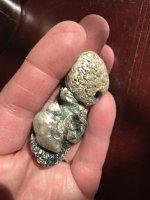 285C9334-E191-4E89-A357-9676346ED850.jpeg1.1 MB · Views: 287
285C9334-E191-4E89-A357-9676346ED850.jpeg1.1 MB · Views: 287 -
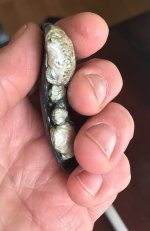 6714014B-4D3B-4147-8B3D-17AC8D18B551.jpeg642.2 KB · Views: 297
6714014B-4D3B-4147-8B3D-17AC8D18B551.jpeg642.2 KB · Views: 297 -
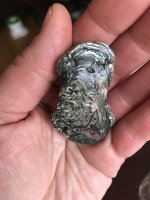 F54E8A51-E027-443A-8451-FEBD0B7A5848.jpeg1.1 MB · Views: 293
F54E8A51-E027-443A-8451-FEBD0B7A5848.jpeg1.1 MB · Views: 293 -
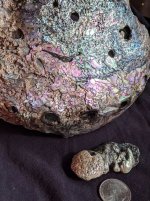 E743D197-E9FF-43B5-A608-19D6425592A4.jpeg124.8 KB · Views: 267
E743D197-E9FF-43B5-A608-19D6425592A4.jpeg124.8 KB · Views: 267 -
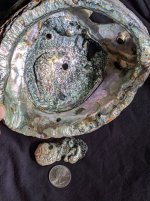 1EE3609B-60E5-477B-BDB5-793EC6961302.jpeg278.6 KB · Views: 252
1EE3609B-60E5-477B-BDB5-793EC6961302.jpeg278.6 KB · Views: 252 -
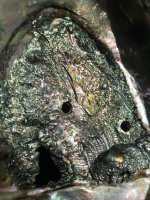 437569B3-C291-4537-B47E-CF703BF1A606.jpeg2.6 MB · Views: 324
437569B3-C291-4537-B47E-CF703BF1A606.jpeg2.6 MB · Views: 324 -
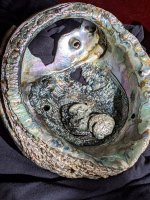 540C40FB-8F56-40D0-8B65-B89CFDF3FDA1.jpeg360.6 KB · Views: 308
540C40FB-8F56-40D0-8B65-B89CFDF3FDA1.jpeg360.6 KB · Views: 308
